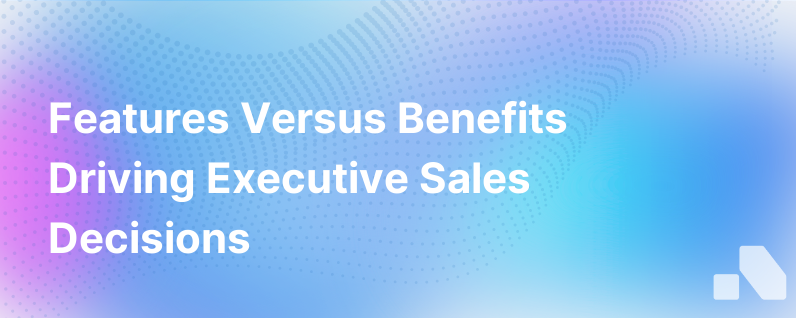Features Vs Benefits
Published on December 12, 2023 by David Zhang
In the world of sales and marketing, there’s one debate that never seems to age - “Features Vs Benefits”. While both the features and benefits of your product or service are important to communicate, understanding the distinction between these two aspects can make all the difference in how effectively you're reaching your target audience. In this article, we’ll delve deep into the intricacies of features versus benefits and how to optimize their use in your sales pitch.
The Honest Truth: Features
We’ll start with features because they're the most concrete part of your product or service. Features are the characteristics, facts, or aspects of your product or service; they describe what it is or what it does. Examples of features could include a car with a V8 engine, or a laptop with 16 GB of RAM. For a software platform, features could be things like real-time analytics, AI-based algorithms, or user-friendly interfaces. Aspects like size, weight, color, hours of operation could all be considered features.
The thing about features is that they’re honest and factual. They don't promise anything; they just are. They're the concrete realities of your product or service that can be measured, quantified, or easily described. The issue with relying solely on features in your sales or marketing messages is that features don’t automatically spell value to a customer.
The Emotional Touch: Benefits
This is where benefits come into play. If features appeal to logic and reason, benefits aim straight for the emotions. Essentially, benefits are the potential outcomes or results from using your product. They reflect how the features of your product can enhance the lives of your customers. Benefits are the tangible or intangible gains that a customer gets; they’re the answer to the “So what?” question.
In case of our prior examples, the benefit of a V8 engine might be exhilarating speed and power for a thrilling drive. The benefit of a laptop with 16 GB of RAM could be smooth and efficient multitasking capabilities. And the benefit of real-time analytics in a software platform might be timely decision-making that could save a company money.
Bridging the Gap: Features Vs Benefits
Now you may ask: “Why can’t I just talk about the features? Surely audiences can connect the dots themselves, can’t they?” The answer is - they might, but often they don't. It's your job to connect those dots. You need to demonstrate the value your product offers – not just listing features, but telling the story of how those features translate into benefits.
Features are important – they give your product substance. But benefits give it meaning. When making a purchasing decision, most customers are driven by emotions and justify the decision with logic. The perfect balance is to provide the cold hard facts (features) and beautifully weave them into a story that rings true for the customer (benefits).
For example, instead of saying, “Our software has real-time analytics (feature)”, you could say, “Make timely, informed decisions that save your company time and money with our real-time analytics feature (benefit)”.
Best Practices To Strike a Balance
Here are best practices for effectively communicating features and benefits:
-
Identify your core features. Start by listing the concrete features of your product. Be as specific as possible.
-
Convert features into benefits. Ask yourself, “So what?” after each feature. The answer will lead you to the benefit.
-
Know your audience. Understand what your target customer values. They may place higher importance on certain benefits over others.
-
Use clear language. Avoid jargon when discussing features and benefits. Use language that's easily understandable for your audience.
-
Tell a story. Try to weave features and benefits into a story that's relatable for your target audience.
Using AI-powered platforms like Aomni could take you a step further in this journey. Aomni uses machine learning to help you identify the prospects that are the most likely to convert, and it provides insights about their values and pain points — giving you a better understanding of what benefits will resonate with each prospect.
In conclusion, striking the right balance between features and benefits is vital. Discussing features gives your product substance, and communicating benefits gives it meaning. By correctly leveraging both, you’ll craft a compelling sales pitch and achieve significant conversion rates. And with intelligent platforms like Aomni, your journey towards this understanding could become much more streamlined.